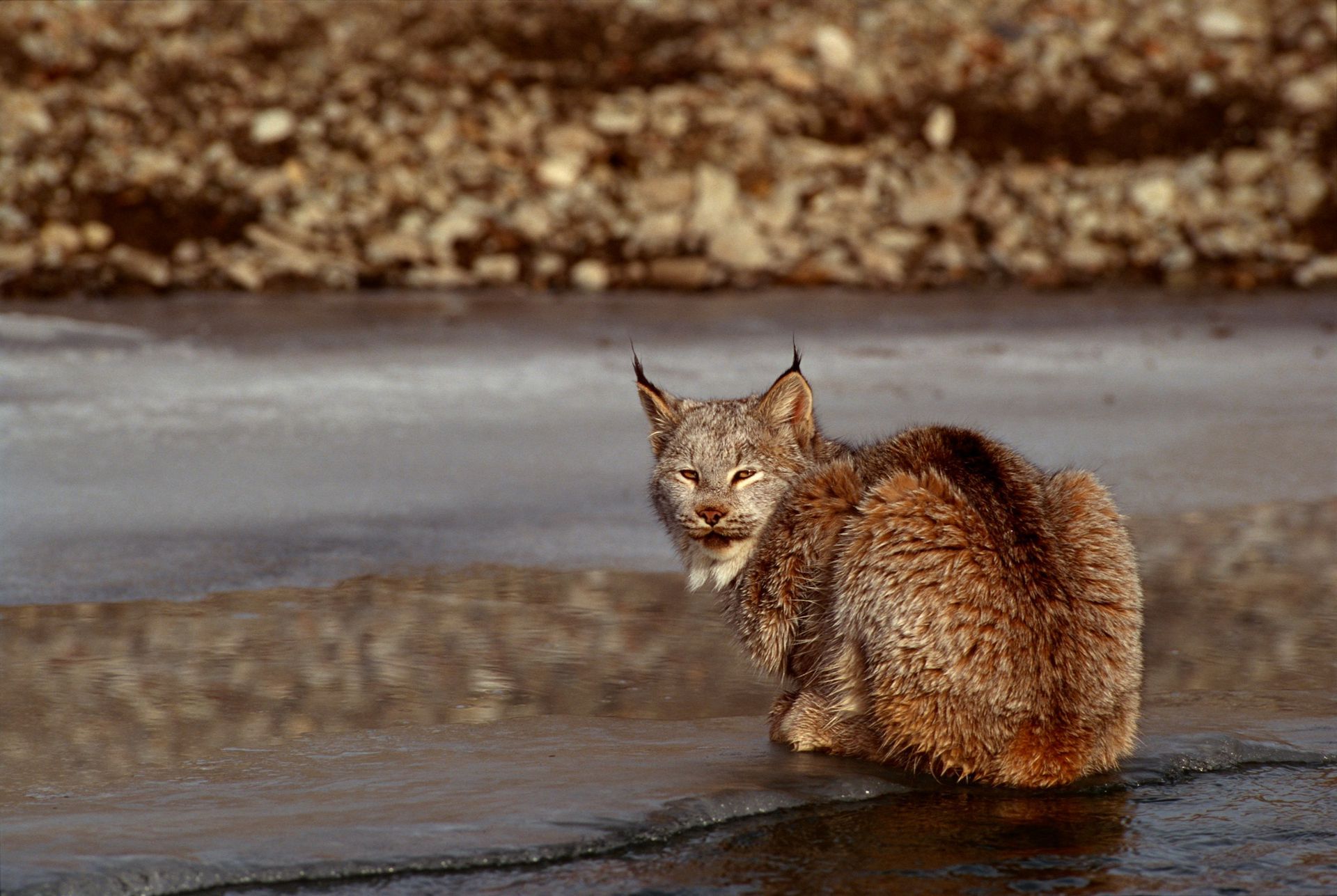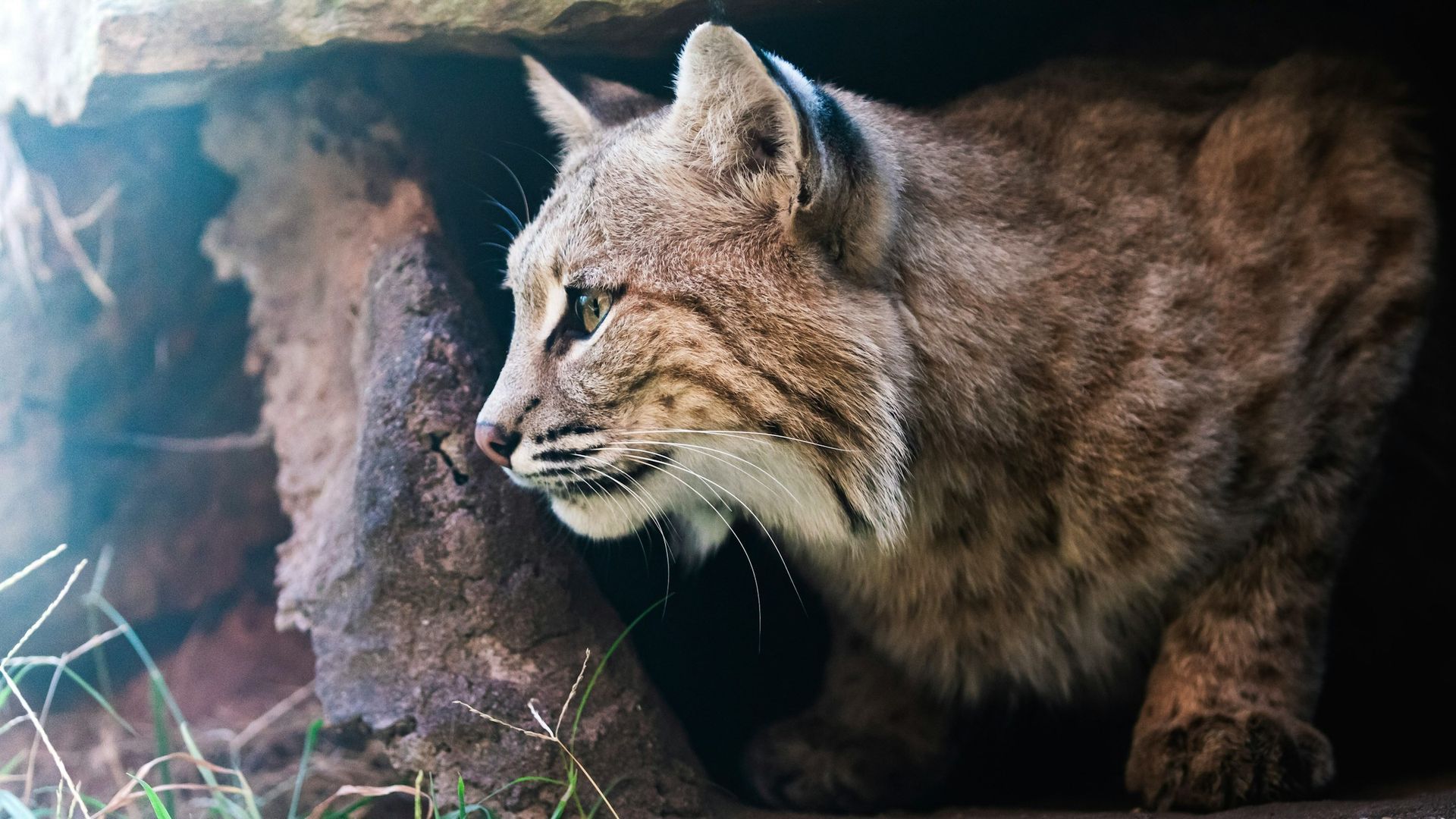Bobcats are a medium-sized wild cat native to North America, known for its adaptability to a wide range of habitats, from dense forests to arid deserts and suburban edges. As a solitary and elusive predator, the bobcat plays a crucial role in maintaining balanced ecosystems by controlling rodent and rabbit populations.
Bobcats typically weigh between 15-30 pounds and measure around 2-4 feet in length, including their short, "bobbed" tail, which gives them their name. Their fur varies in shades of brown, tan, and gray with distinctive black spots and stripes, providing excellent camouflage in natural surroundings. They have tufted ears, similar to their larger lynx relatives, which enhance their hearing capabilities.
These nocturnal hunters primarily feed on rabbits, hares, rodents, birds, and sometimes deer fawns. They are highly territorial, marking their home ranges with scent markings and claw scratches. Mating occurs in late winter, and after a gestation period of about 60 days, females give birth to litters of 1-6 kittens in dens located in hollow logs, caves, or thick vegetation. The mother raises the young alone, teaching them essential survival skills before they disperse.
Bobcats face predation from mountain lions and coyotes, but their greatest threats come from habitat destruction, vehicle collisions, and human-wildlife conflicts. They are widespread across North America, ranging from southern Canada to Mexico, with stable populations in many regions due to their adaptability.

For your safety and the well-being of wildlife, please observe animals from a distance and avoid touching or disturbing them. If you encounter an animal that appears injured or in distress, contact a licensed wildlife rescue organization for guidance before intervening.
Found An Animal? Not sure how to help a wild animal in need? Learn when to step in, who to call, and how to help safely.
Did You Know?
- Bobcats can leap up to 10 feet in the air to catch birds or evade predators.
- Their short tails help them maintain balance and agility while navigating rugged terrain.
- Bobcats are excellent climbers and often escape threats by scaling trees.
- Unlike domestic cats, bobcats do not meow but communicate through growls, yowls, and hisses.
- Their powerful hind legs allow them to sprint at speeds of up to 30 mph.
- Bobcats are skilled swimmers and will cross rivers if necessary to expand their territory.
- Some indigenous cultures consider bobcats symbols of patience and independence.
- They can adapt their hunting techniques depending on prey availability, showcasing remarkable intelligence.
- Bobcats often reuse abandoned dens from other animals rather than digging their own.
Problems Faced In The Wild
- Habitat Loss: Urban development and deforestation reduce suitable hunting and denning areas.
- Vehicle Collisions: Roads fragment habitats, leading to high mortality rates from traffic.
- Poaching and Fur Trade: Illegal hunting and trapping for pelts pose risks in some regions.
- Human-Wildlife Conflict: Encounters with livestock farmers and suburban expansion increase lethal control measures.
- Rodenticide Poisoning: Consuming poisoned prey can lead to secondary poisoning and health complications.
- Climate Change: Alterations in prey populations and habitat availability affect survival rates.
Tips For Cohabitation
- Secure Livestock and Pets: Use enclosures to prevent conflicts with bobcats seeking easy prey.
- Avoid Feeding Wildlife: Reducing food attractants minimizes bobcat presence in residential areas.
- Drive Cautiously in Rural Areas: Watch for bobcats crossing roads, particularly at dawn and dusk.
- Use Motion-Activated Deterrents: Lights or noise can discourage bobcats from approaching properties.
- Preserve Natural Habitats: Protecting wooded areas and open land ensures stable populations.
- Educate the Community: Awareness about bobcat behavior reduces fear and promotes coexistence.



